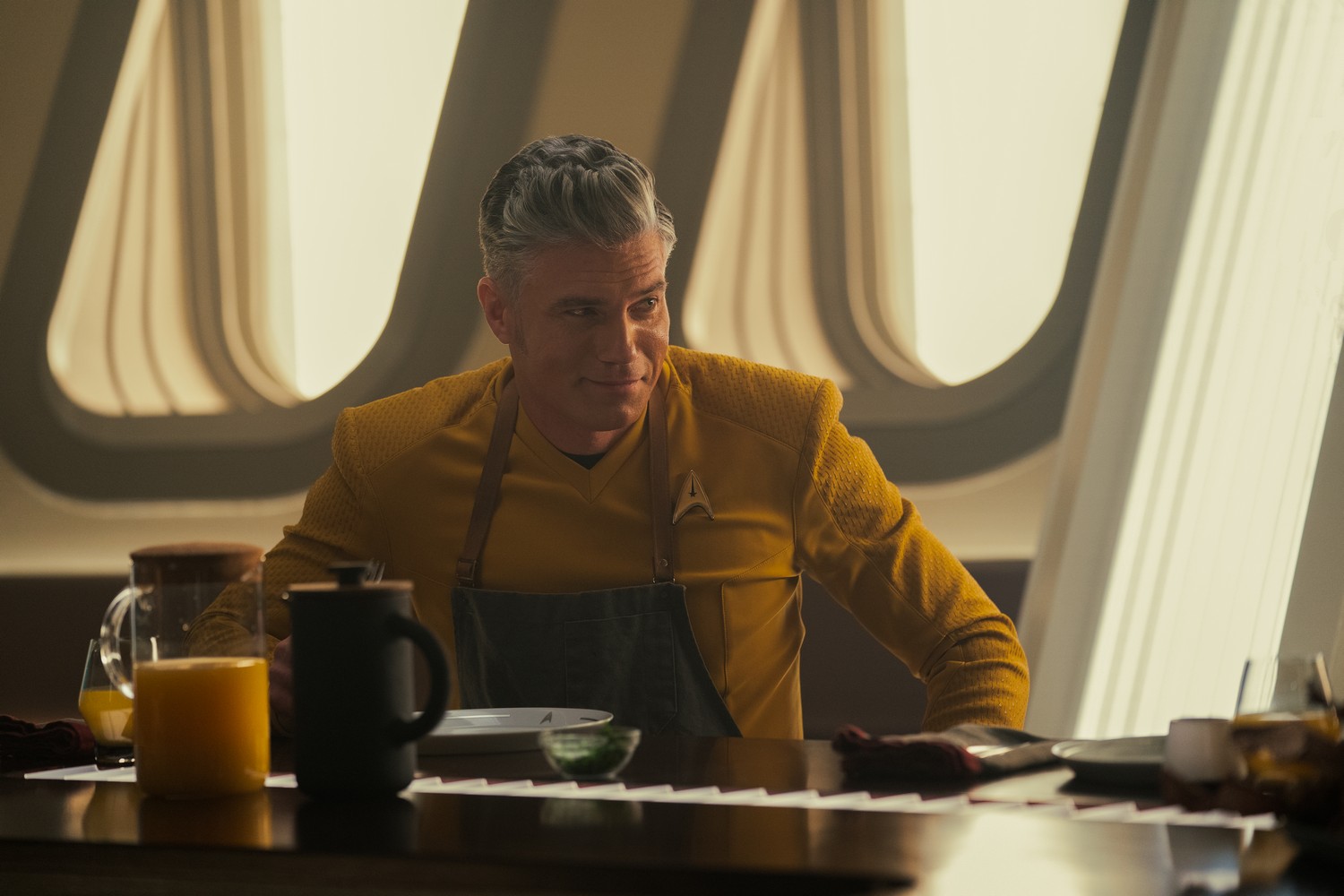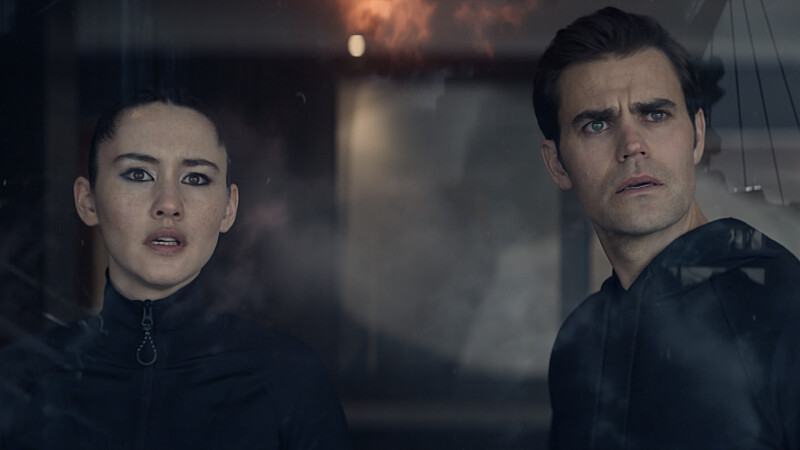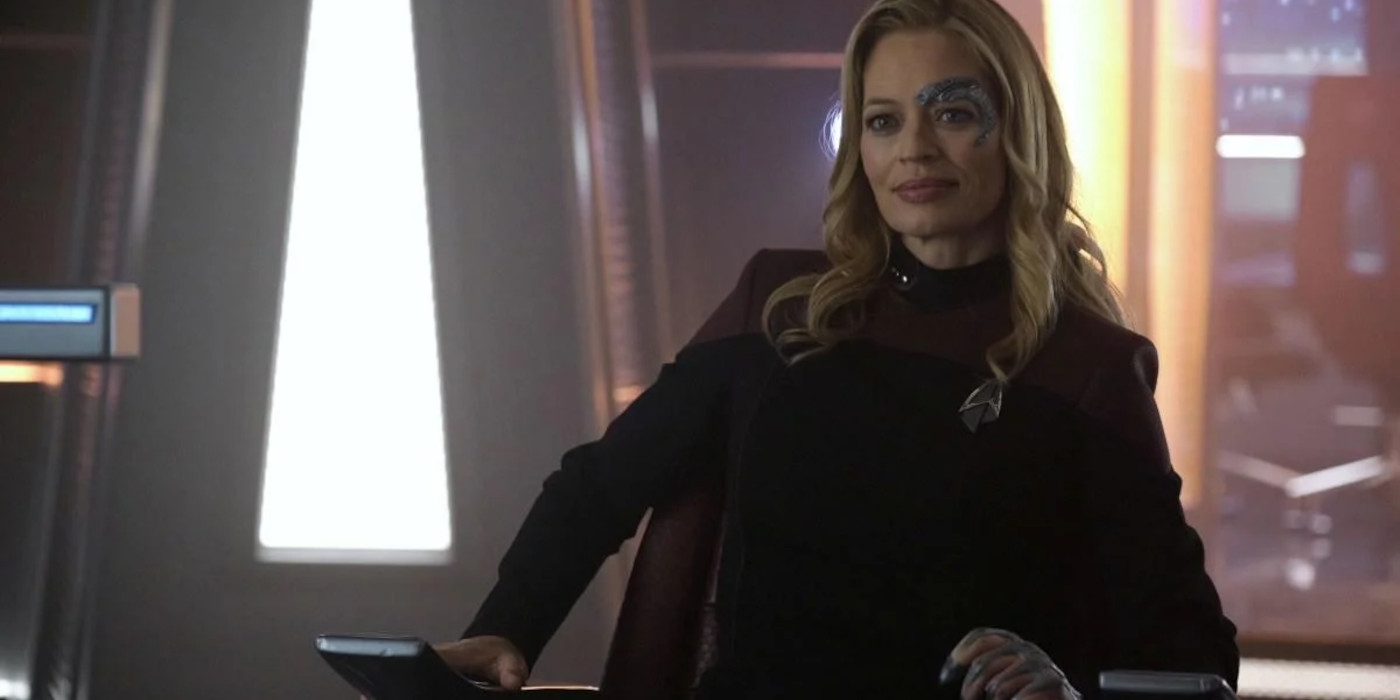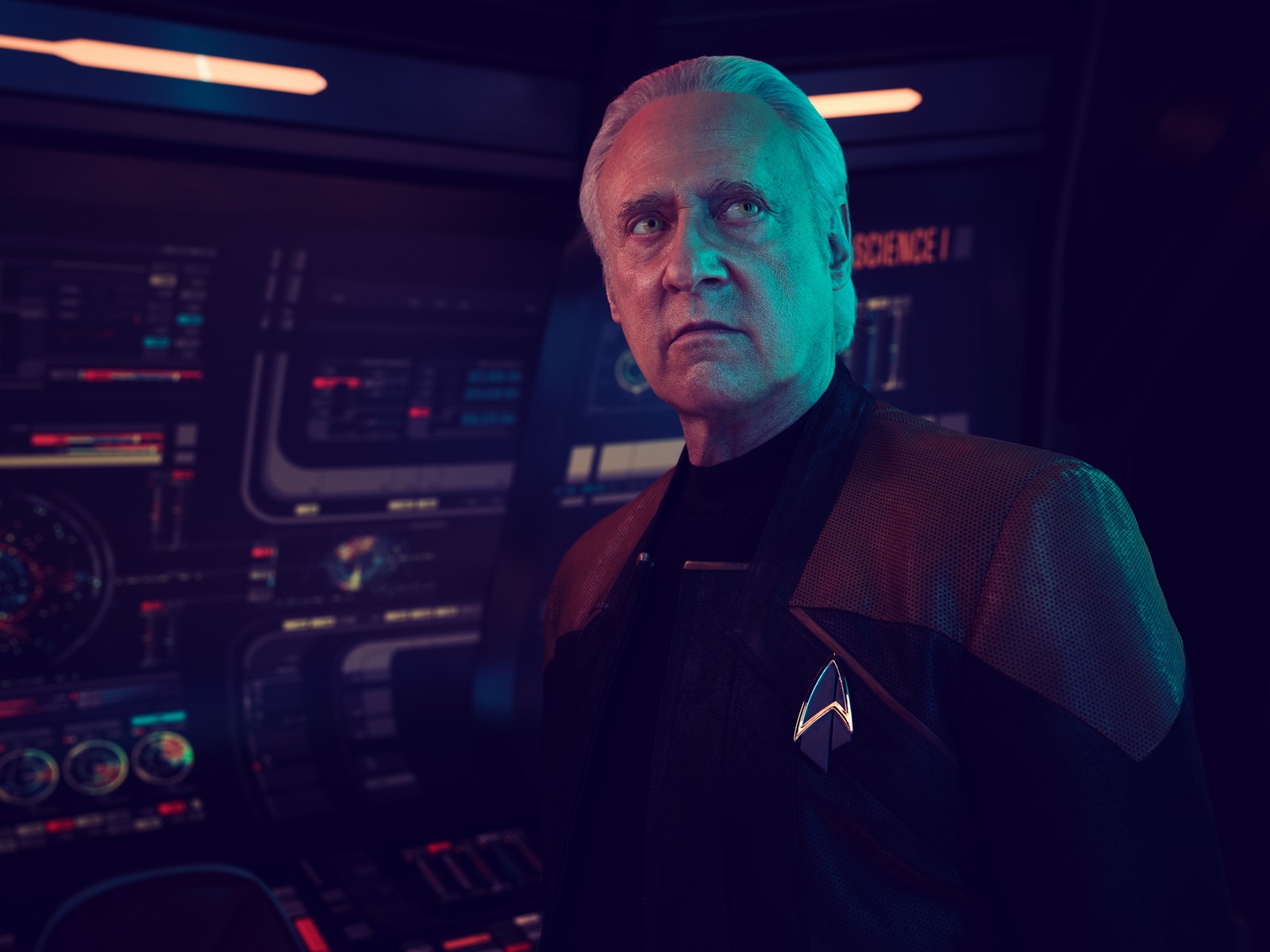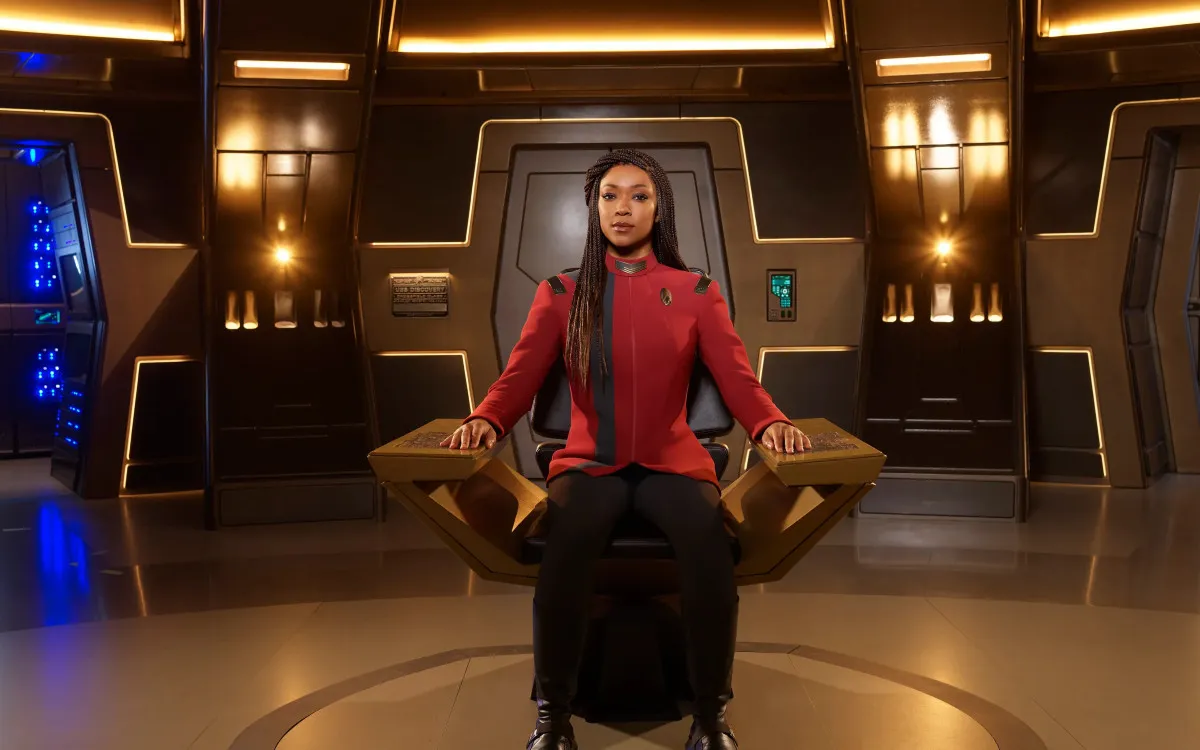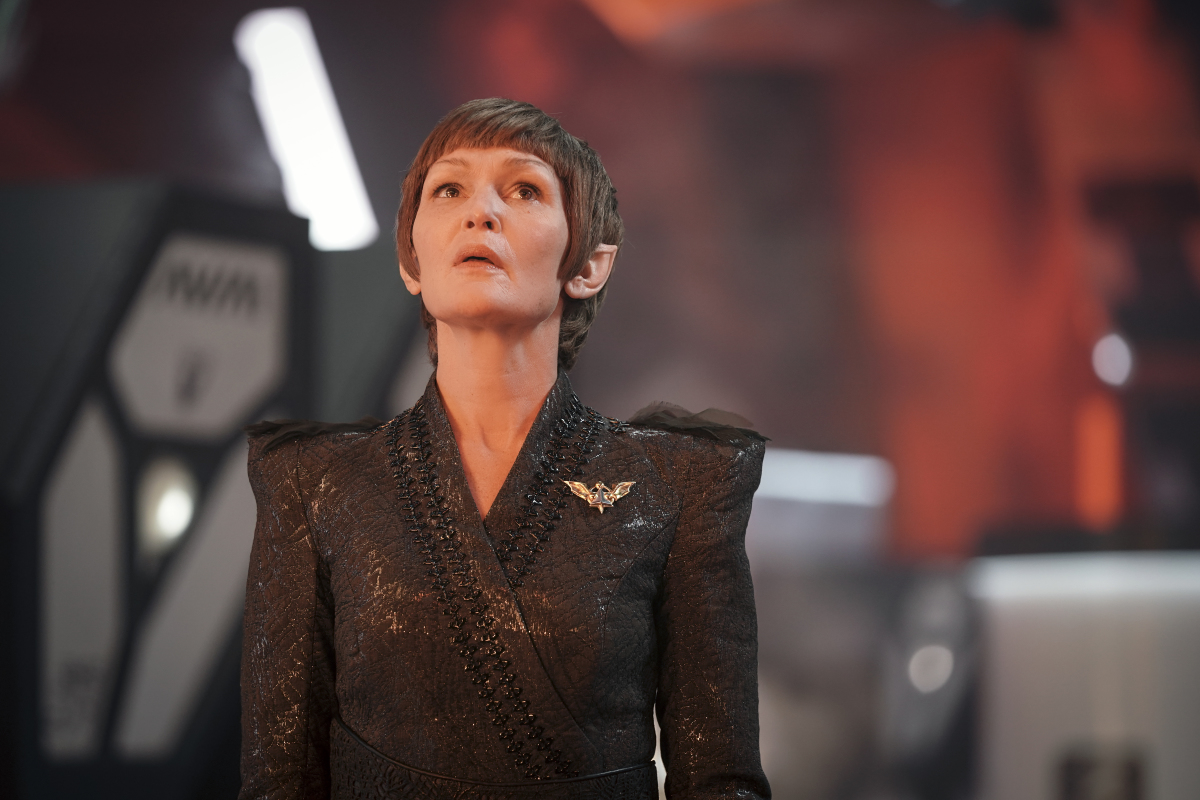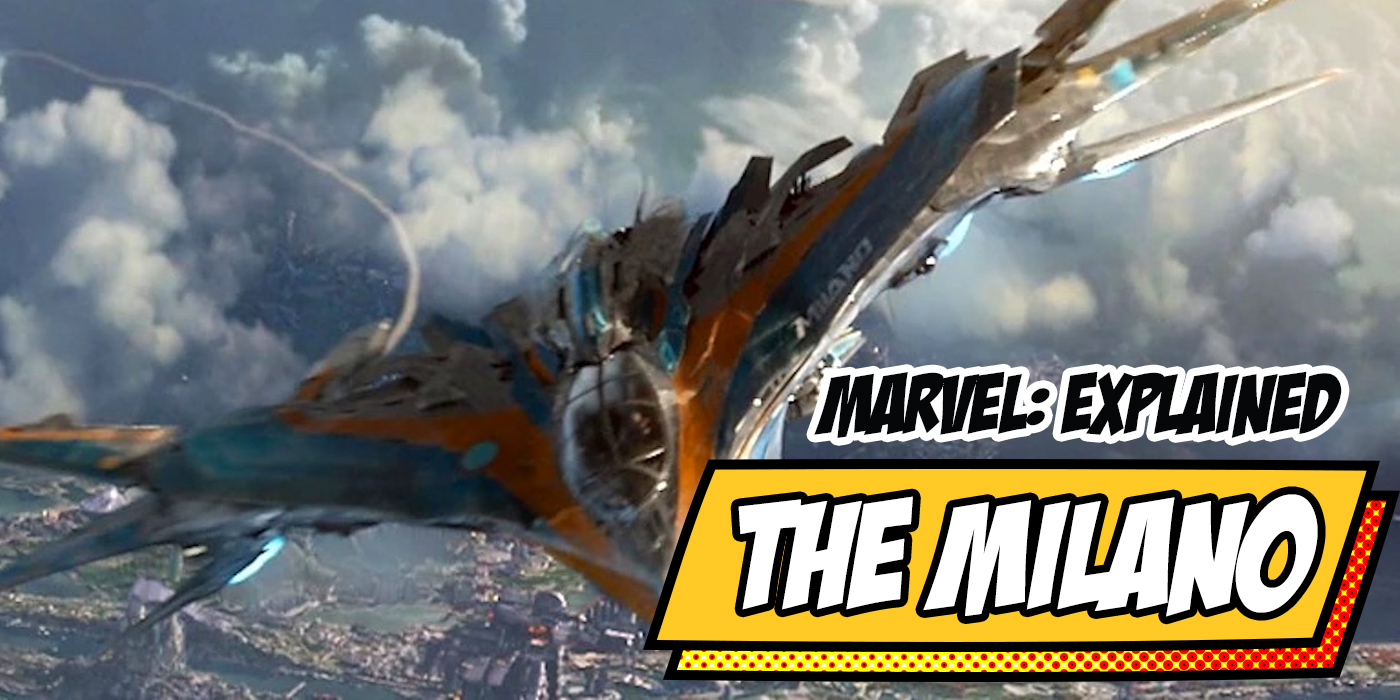Star Trek Needs to Pick an Era — But Which One?
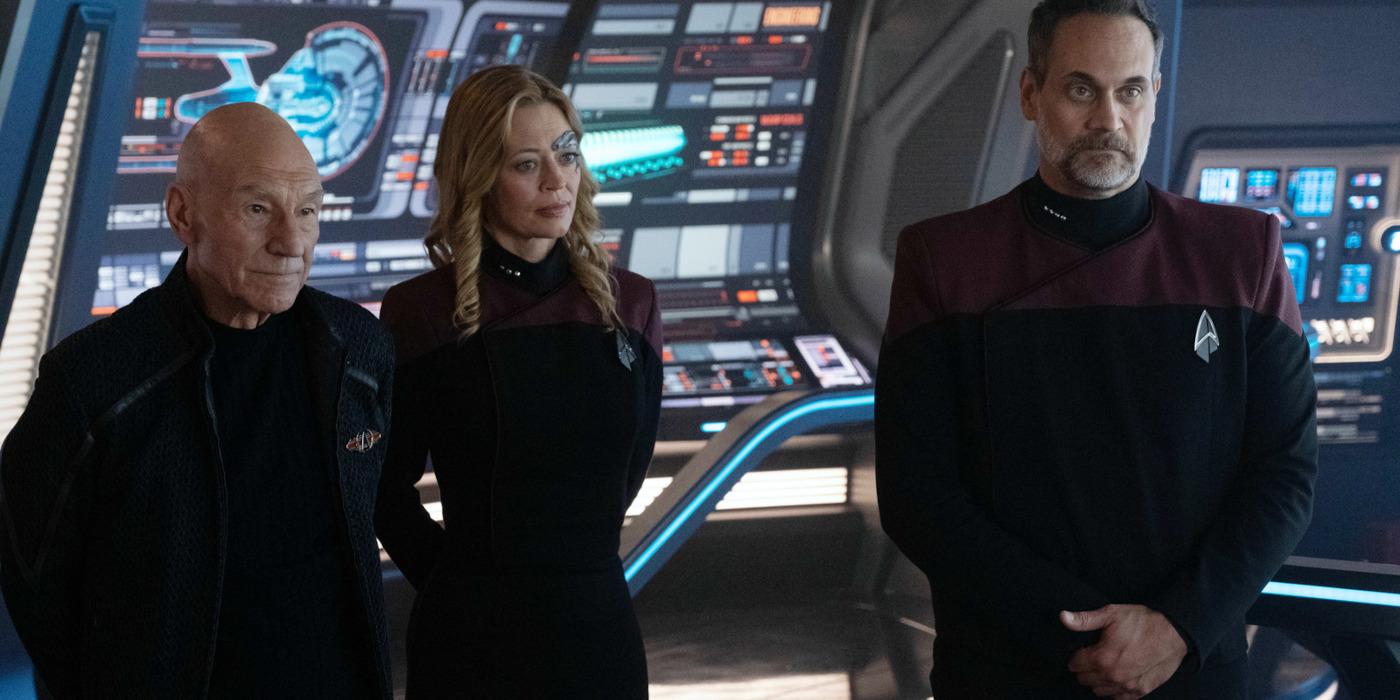
There are no Star Trek shows at present set in the same time period. Whatever comes next, a consistent timeline is sorely necessary.
There are many reasons people think of the Star Trek: The Next Generation through Star Trek: Voyager era as the golden age of the franchise. However, one oft-overlooked positive for that time is that all the shows are concurrent. That may not sound important, but it is.
Even though each of these three ’90s shows has its own energy, the world they are set in is the same. The result is a common language. When someone talks about Starfleet, we know what that is. Whether Captain Picard in the flagship says the phrase “Prime Directive” or Captain Janeway says it in the Delta Quadrant—we know what that is.
What it means to be Vulcan, Klingon, an artificial lifeform—writers, characters, and fans all share an understanding. When someone follows the rules, we know why. When someone breaks the rules, we grasp the weight of it across every show, every ship, every part of the galaxy.
Since Star Trek: Discovery, the current world of Star Trek has had no such commonality. Even shows like Star Trek: Lower Decks and Star Trek: Prodigy exist in similar, but not exact time period. It’s confusing! What are the rules? We don’t know and neither do the creatives.
The best solution is to move everything under one banner, one time period. But which one? Let’s look at the three most likely candidates in chronological order and assess the pros and cons.
Strange New Worlds – The Pros
Star Trek: Strange New Worlds is (as of now) the newest of the Trek shows. But with only two seasons under its belt, it’s done an exceptional job of straddling the line between episodic and serialized storytelling. More than that, its writers and performers deftly jump between comedy and drama. And on top of everything else, we get the Enterprise with a new vision of Captain Christopher Pike as well as several other classic Star Trek characters.
There’s a lot to explore in the mid-23rd century. Spock is not quite Spock yet. All the relationships between the different Federation worlds remain largely untested. And with two seasons under the show’s belt, we already have a solid sense of what this time period feels like and looks like.
Speaking of which, there are already a number of standing sets and programmed digital worlds with which to play. That immediately lowers costs in addition to giving us a common visual framework from which to work.
Ultimately, this time period is tested as the team behind everything is above board. Well, almost everything.
Strange New Worlds – The Cons
The temptation to focus on legacy characters is stronger in the 23rd century than it is in any other time period. We already have Pike, Spock, Chapel, M’Benga, Una, and Scotty. Even if more, non-Enterprise shows, come from this time period, the likelihood of revisitation is HIGH,
And while that doesn’t have to be a problem, there is an issue presently plaguing SNW that shows no sign of stopping. The people behind the show consistently struggle with what things to keep the same and what must change. Kirk says no one has seen a Gorn on Star Trek: The Original Series. But that’s not true now! However, the self-enforced requirement to maintain course on characters like Spock and Pike sometimes hamstrings long-form storytelling.
Expanding that outward to any future shows compounds that problem. This is resolvable. All the creators need to do is say that this is an alternate timeline and we can move on. But it seems the most they’ll do is imply that.
It’s not a deal breaker, but the legacy of the 23rd-century timeline does have its obstacles. And on the topic of legacy…
Star Trek: Legacy – The Pros
Star Trek: Picard ends with the newly-christened Enterprise G featuring crewmates Captain Seven, First Officer Raffi, Lieutenant Sidney La Forge, and Jack Crusher. Plus, apparently, Q is still alive and there are new troubles on the horizon. In other words: the premise is already good to go. It also helps that former showrunner Terry Matalas already has a loose outline for what he wants to do.
Exploring the early 25th century has a lot of benefits. Thanks to Picard, Lower Decks, and even Prodigy we do have some sense of what this time period looks and feels like. But arguably the biggest positive for Legacy is that so many fans are keen on it. There’s really one major fan petition out there for Star Trek and it is emphatically for there to be a Star Trek: Legacy series.
This leaves us open to exploring brand new characters. But it also lets us inspect what’s happening with Worf, Data, Geordi, or anyone else from this time with relative ease. There’s no end to the fodder. But that’s also kind of the problem.
Star Trek: Legacy – The Cons
Star Trek: Legacy is the proverbial middle child option. It is both beholden to the recent past and it also has some of its future written as well thanks to Star Trek: Discovery. But that’s not a negative necessarily. A tight framework can benefit a writer’s room. Fan expectation, however…
There are two major challenges here. The first is that every fan has their own vision for what Star Trek: Legacy should be. And that means no one will be satisfied with what they actually get. Every time writers tackle classic characters they risk both fixating on nostalgia and making changes that frustrate more than satisfy. It’s a virtually impossible tightrope.
But the biggest issue is that the people behind the scenes don’t want Legacy. Matalas says so. John DeLancie says so. Even production designer Dave Blass says so. It’s entirely possible for fans to put on pressure, but given the current plans for Star Trek: Academy and the Section 31 movie, the odds are not great.
The 32nd Century – The Pros
As Star Trek: Discovery prepares to complete its fifth and final season, its far-flung future time period remains largely mysterious. The Federation is very small thanks to “the Burn”. Vulcans and Romulans live together in peace-ish on the planet Ni’Var. But everything else is a massive question mark.
And therein lies the appeal of centering the future of Star Trek in this timeline—it’s virtually all unwritten. And the direction DISCO takes us is one towards reunification for the Federation. While we do not know where that story ends yet, it’s safe to say that there will be lots more to explore.
Every familiar alien species is different in some way. There are likely tons of new planets to explore. Do the Borg exist in this time? What new potential threats and allies are out there? The galaxy is our oyster. However…
The 32nd Century – The Cons
If Star Trek: Legacy is the fandom’s most favorite idea, it’s probably safe to say that a continuation from DISCO is their least favorite. The show faced problems from its inception due to a myriad of factors. Being the first Trek series to premiere on streaming only doesn’t help. The fact that original showrunner Bryan Fuller got fired under mysterious circumstances isn’t great either. In short: DISCO has always struggled to pass the vibe check.
Is it possible for a continuation in this time period to embrace the lighter, more episodic nature of Star Trek: Strange New Worlds? Sure. But it’s equally possible that, if the same team continues, their self-serious serialized stories will continue. And more than any other potential criticism, that feels like the biggest risk in choosing this as our core timeline.
Ultimately, there are benefits and challenges to every option. But regardless, things will go a lot more smoothly if the powers that be pick one and run with it.

